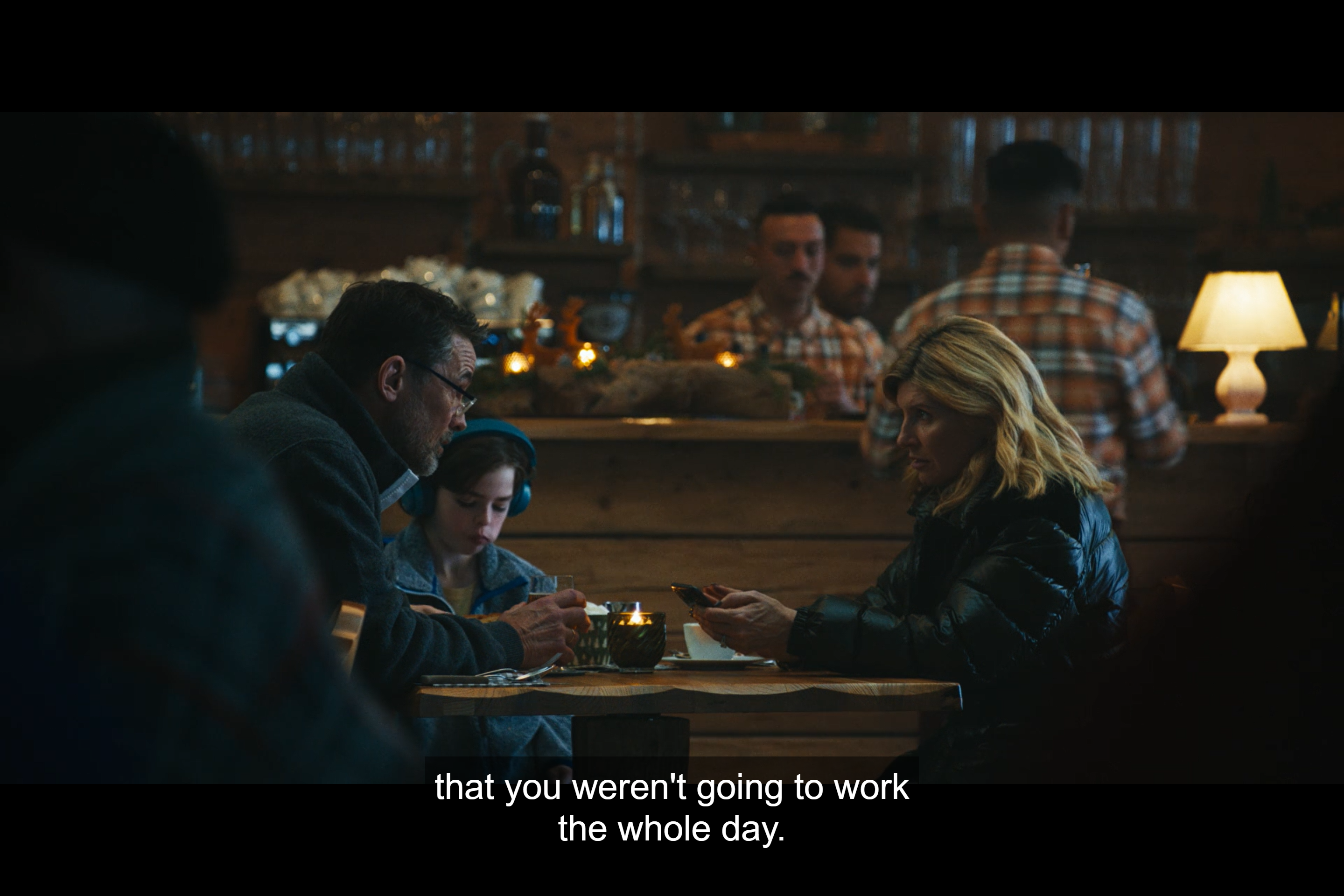
With my wife, Joanne, traveling, I was left to my own devices for a couple of days. The only mischief I got up to was experimenting briefly with low-calorie pizza (not to be repeated) and watching a new limited series on Prime Video, Mr. & Mrs. Smith.
I found Mr. & Mrs. Smith diverting, mostly because I find Donald Glover and Maya Erskine appealing. But that’s not what this post is about. Instead, it’s about a bit of dialogue in episode 3, starting at 17:28. John and Jane Smith are in a restaurant surveilling a husband and wife, Parker and Gavol, who are sitting at a separate table, with their child. (I’ve modified the transcript to show the intonation.)
[Parker] You said last night that you weren’t going to work the whole day.
[Gavol] No, I didn’t. I said I wasn’t gonna work the whole day. I have to work some of the day.
[John, speaking to Jane] That’s not what she said.
[Jane] No, he obviously misunderstood her.
[Gavol] You’re just deliberately misunderstanding me so you can be upset with me.
[Jane] See?
[Parker] No. No, you said, “I will not work. The. Whole. Day.”
[Gavol] I said, “I will not work the whole day.”
[Parker] Okay, I wish, I w… [exclaims] I wish I had a recording right now, so I can play back how wrong you are.
[John] We do have a recording. Should we give it to him?
Why did that grab my attention? Because Parker’s misunderstanding is the result of … ambiguity of the part versus the whole!
What, you ask, is ambiguity of the part versus the whole? Here’s how MSCD describes it.
Use of plural nouns and the words and, or, every, each, all, and any can cause ambiguity. In each case, the question is whether it is a single member of a group of two or more that’s being referred to, or the entire group, so this manual uses the phrase “the part versus the whole” to refer to this sort of ambiguity.
The example in Mr. & Mrs. Smith is broadly analogous to a phrase that featured in a dispute discussed in MSCD, at ¶¶ 11.112–.118: if all of the Conditions have not been discharged. That dispute is also discussed in this 2016 blog post; I won’t rehash it here.
But the language at issue in that dispute involves a group of items (the Conditions) instead of the one item (the whole day) featured in the Mr. & Mrs. Smith example. A contract example that’s more directly analogous to the Mr. & Mrs. Smith example might be The Landlord shall not permit pets on the entire Property. (Ambiguity afflicts equivalents to all, including the whole and the entire.) But that would be poor drafting—if something in a contract is ambiguous, it follows that it was poorly drafted. Given what’s at stake, contracts have to be less forgiving of ambiguity than conversational English.
Intonation can help distinguish between meanings. In this case, originally Gavol did indeed emphasize, slightly, the word whole (it’s at 4:54 of episode 3), but I don’t think she emphasized it enough to make it clear to Parker which meaning she intended: I think that even with her emphasis, it was ambiguous. (Of course, there’s no intonation in contract text.)
It’s a good indication of how freewheeling Mr. & Mrs. Smith is that those behind it felt it worth devoting 40 seconds to ambiguity of the part versus the whole. Five stars! 😊
By the way, there’s a special place in my wizened heart for ambiguity of the part versus the whole. In the absence of an established alternative, I came up with the label “ambiguity of the part versus the whole”; if you haven’t given a name to a phenomenon, that’s a sure sign you haven’t looked at it closely. The 31 pages of MSCD chapter 11 constitute the most thorough discussion of the subject in any literature, as far as I’ve been able to tell. It was hard won, because it’s a fiendishly subtle topic. I wouldn’t have gotten anywhere without the determined help of the great Rodney Huddleston (see this 2020 blog post).
Given that legal commentary on the subject is otherwise meh, and given that courts often fumble their handling of this kind of ambiguity, I’ve assumed that the legal establishment would remain oblivious of MSCD ‘s treatment of it. But I noticed that last year the U.S. Solicitor General saw fit to cite MSCD in a brief submitted to the U.S. Supreme Court regarding a dispute over an and (see this 2023 blog post).

1/ I’ve never wrapped my head around ‘ambiguity of the part versus the whole’.
2/ I deeply understand pride of naming. The guy who invented CTRL + ALT + DEL was a celebrity in certain circles. I (think I) coined the verbs ‘nitcap’ and ‘allcap’. They never caught on, but I’m still proud of them.
3/ When Joanne returns, tell her that because so many people fear Siri and Alexa listening to everything they say, they’ve come out with a male version. It’s a man, so it never listens to anything.
4/ Finally, since you’re a dad, a dad joke: What have ticks and the Eiffel Towner in common? Answer: They’re both parasites.